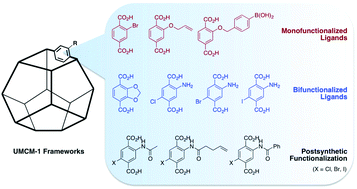Functional tolerance in an isoreticular series of highly porous metal–organic frameworks†
Abstract
A series of highly porous University of Michigan Crystalline Material (UMCM-1) type Zn-based metal–organic frameworks (MOFs) were synthesized from mono- and bi-functionalized benzenedicarboxylate (BDC)


 Please wait while we load your content...
Please wait while we load your content...